While it is early in the EFL season, we are starting to see patterns and trends in all sorts of areas that could play a huge part in how the season could shape up. Teams up and down the leagues will be making tweaks to fine-tune their performance, and current League Two leaders Gillingham have a job on their hands if they are to sustain a strong promotion bid.
While Neil Harris’ men have started well in terms of results (winning six out of their first eight games) and boasting the joint-best defensive record in the division, their attacking output is shockingly low. The Gills have found the back of the net just seven times in eight games – only Bradford City, Harrogate Town, and Forest Green Rovers have had a worse time in front of goal in League Two this campaign.
Even with a solid defensive foundation, Gillingham will seriously struggle to stay in the mix for promotion if they don’t locate the source of their attacking issues and rectify them. The club enjoyed a successful transfer window back in January and followed it up with a solid recruitment drive in the summer just gone, so it could be a case of new players settling in, but some of the players they have signed come with quality and experience of League One and even the Championship.
This scout report will provide a tactical analysis of Gillingham’s attacking tactics as we look to identify any potential issues in their approach play that have resulted in such a low goal total. The analysis will cover the Gills’ setup with an overview of the main signings made this summer, followed by an assessment of one of their main issues in attack. Finally, we will look at some areas that Harris’ side could focus on more often, with a focus on data to highlight some of their underlying strengths.
Team Overview
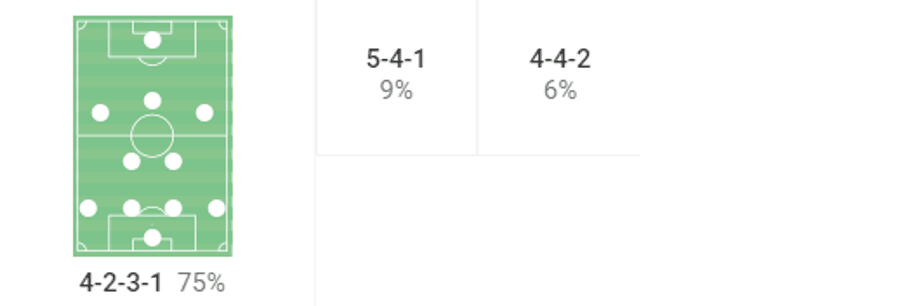
So far this season, while playing league football, Gillingham has preferred a 4-2-3-1 formation – a shape often linked to strong defensive performances thanks to including two deeper midfielders.
As we mentioned, the Gills have been busy in recent transfer windows, and this summer, they turned a few heads with some of the names they attracted. 10 signings in total, which include free transfers, a loan deal, and the arrival of players from higher divisions – many of social media’s season predictions had Gillingham to have a strong campaign based on their excellent player recruitment this summer.
They have made a few coup signings in defence – Scott Malone from Millwall and Connor Masterson from QPR are just examples; this focus and detail here will go to the midfielders and forwards who have joined the Gills as it lies within the context of the scout report more.
In midfield, vastly experienced EFL midfielder Jonny Williams has been added to the ranks, signing from Swindon back in January, while the summer arrival of Connor Mahoney on loan from Huddersfield adds to the quality in wide areas.
One of the surprise signings of the summer who is yet to deliver is striker Macauley Bonne, who joins from Charlton Athletic. Bonne, 27, is looking to get his career back on track after a lacklustre campaign in 22/23. He has good goal-scoring calibre, though, so Harris will be desperate to get the best out of Bonne to get his team firing.
There is also abundant talent running through the Gills squad in all departments outside the names mentioned here.
Primary issue – activity levels in the final third
If you haven’t caught any of Gillingham’s matches this season and haven’t seen the numbers, you’re probably asking, “are Gillingham creating a lot of chances on goal and just wasting them, or are they struggling to create chances at all?” The answer would be the latter. There are several key data points that, when you consider all of them, it really is no surprise that Harris’ team are struggling to produce in attack. Here, we will look at some of the reasons behind this – is it tactical, individual, or a mixture of both?
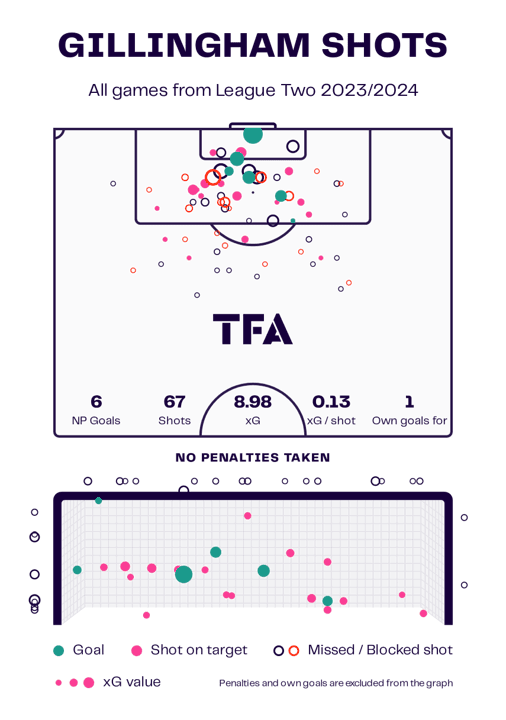
If you saw the visual above without knowing the current league table, there is no way you would guess that Gillingham are leading the way as it stands. Yes, they are underperforming their xG, but even if their efficiency matched the xG of 8.98, there would still be cause for concern regarding chance creation. Their current xG is also the fifth lowest in League Two, and they have the second-lowest average of shots per 90 (7.45), both of which are an immediate alarm bell for a team that has invested fairly heavily in the squad of late.
When we dive deeper than the data behind the shots, we learn that not only do the Gills struggle to create goal-scoring opportunities, but they struggle to get into the final third and the box, according to the data, at least – while they do post a good average for passes into the final third (59.96 per 90), their accuracy of 55.5% suggests that there is little consistency and structure in their build-up phases.
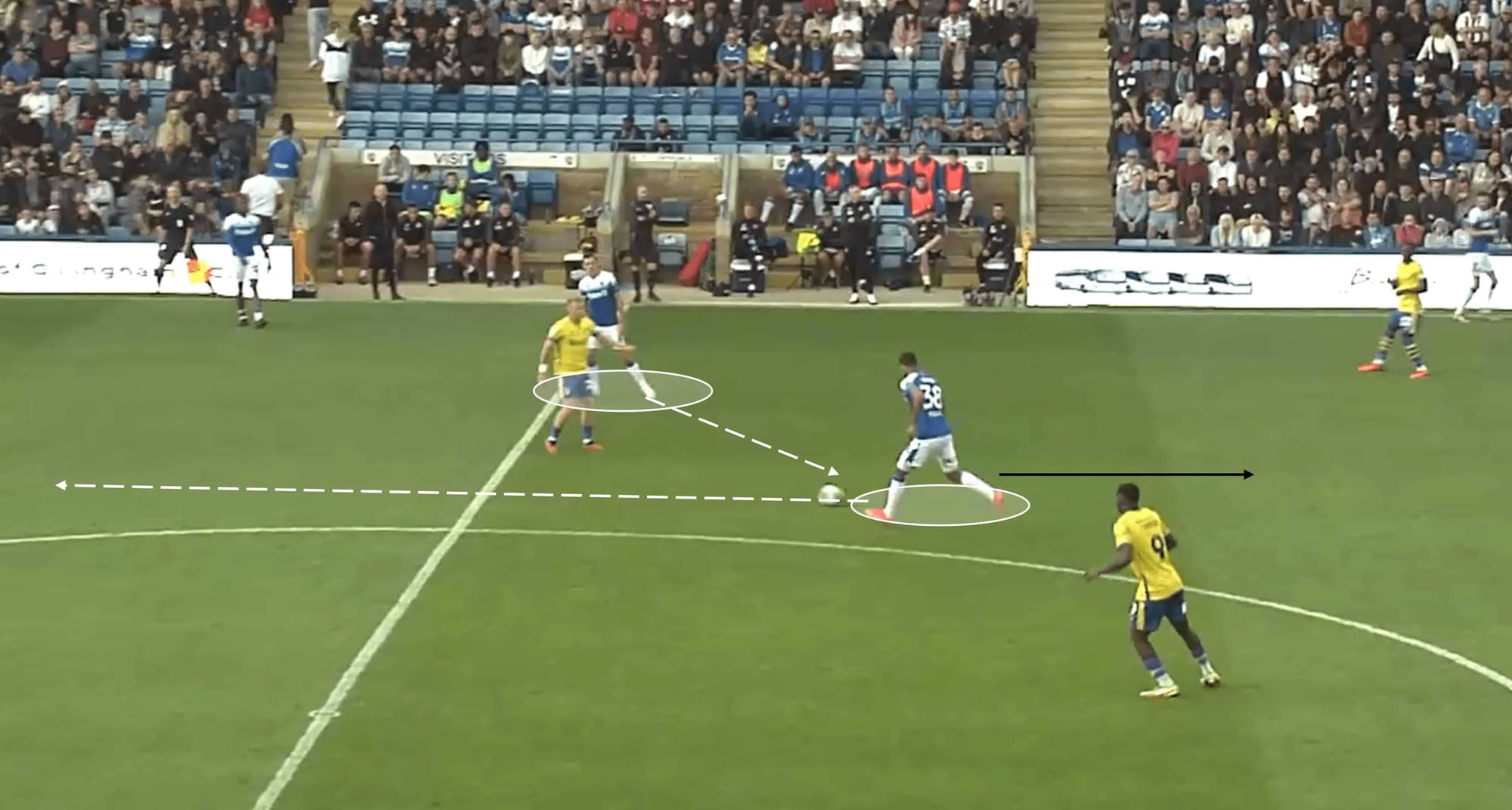
Small details can often be hugely influential – recognising them and correcting them where necessary will make a world of difference, it doesn’t matter what league or competition. On a separate note, all good attacking teams show confidence and the ability to be more courageous and aggressive in possession and take more risks. The image above shows Gillingham demonstrating opposite traits.
Tim Dieng is the midfielder on the ball. Having received the pass from his left-back, Dieng, almost on autopilot by the looks of it, bounces the pass back to a central defender without a hint of hesitation. While this action has no harm, what good does it do his team? Especially when there was clear space to move forward into – he just needed to scan and receive the ball on the half-turn simply, and he would’ve changed the entire outlook of this possession phase. It may seem like a harsh incident to isolate, but these passive moments in possession seem to be a theme for Gillingham this season.
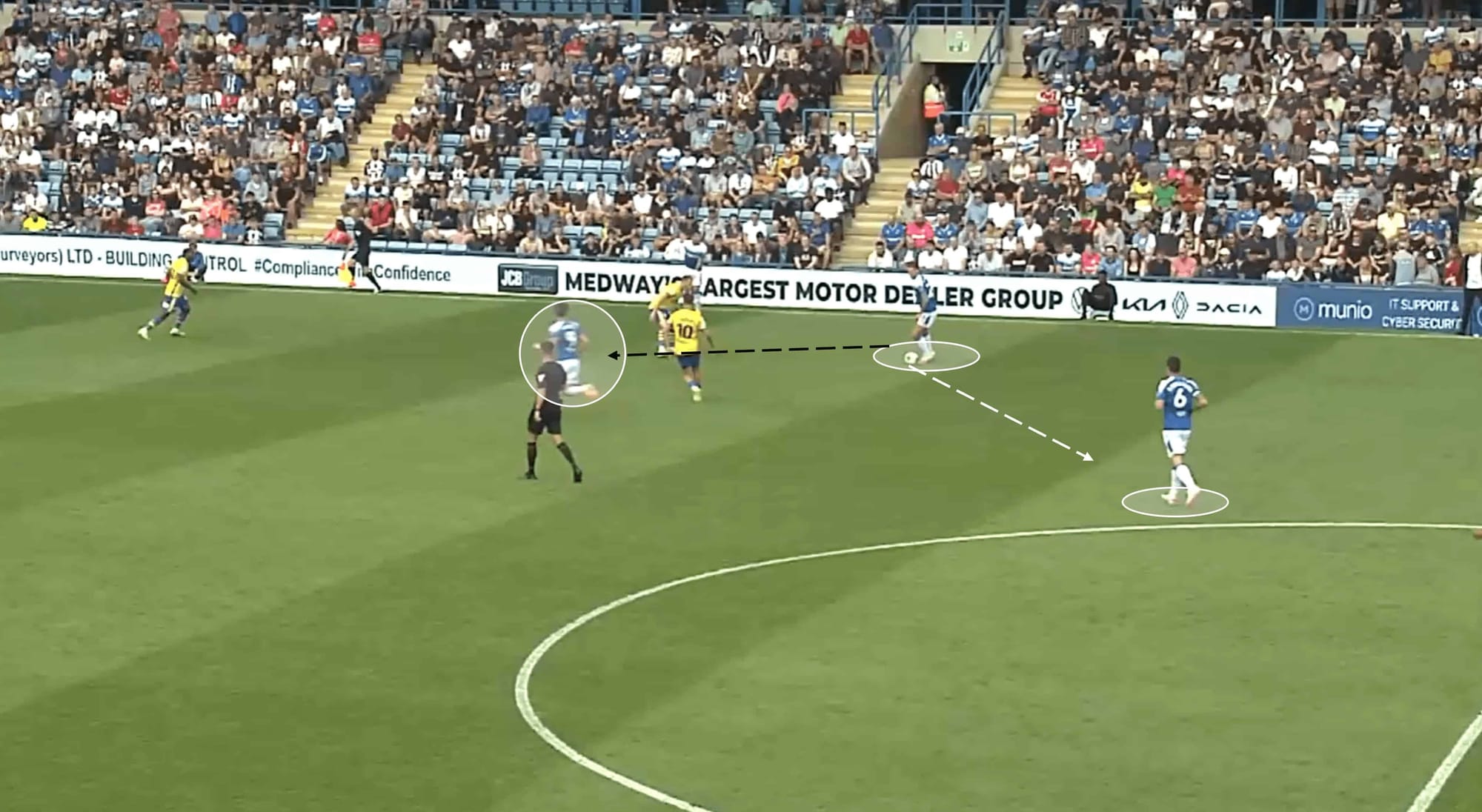
This example holds similar points – there is an excellent chance to play a forward pass into Tom Nichols (there is a sizeable gap between the two yellow shirts, particularly for such a short pass). Still, instead, the pass is played backwards to Shaun Williams. Again, this pass has no harm, and it arguably has the potential to create new attacking avenues for Gills to explore from a more central area. However, the initial pass into Williams was followed by further slow sideways passing with tiny creative movement further forward to offer progress to the possession.
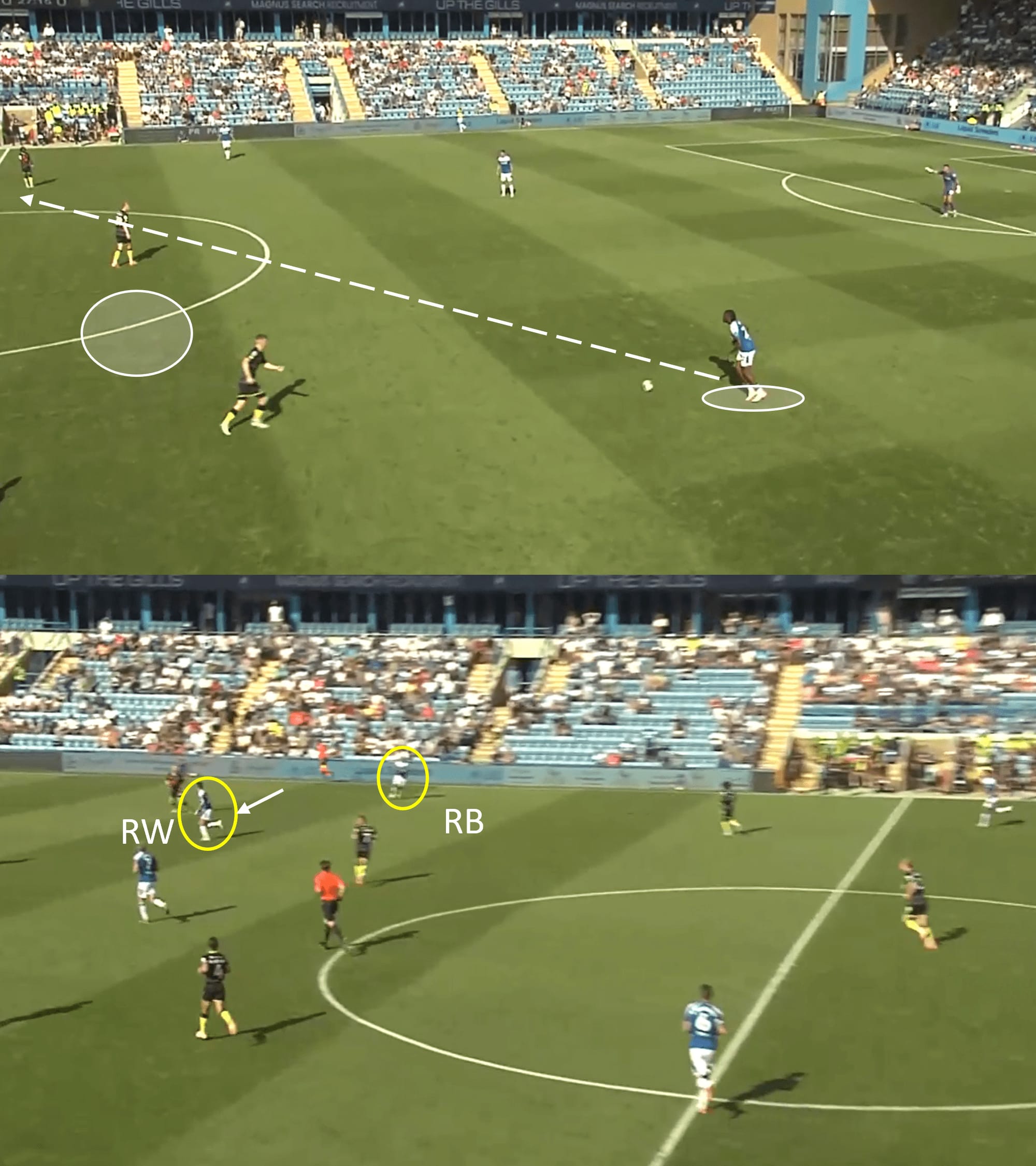
That lack of movement is apparent in deeper areas at times, too – yes, Williams (seen in the lower of the two images above) is accessible in central midfield. Still, considering the angle his left-footed teammate in defence had on offer due to the opposition press, there was a much higher risk involved in making that pass than you might initially realise. A simple drop into space with an easier passing line/angle would’ve made Williams a much more accessible option. Instead, the CB went long, which brings up another noteworthy stat…
Gills average 60.96 long passes per 90, the second-highest average in the league, but their accuracy rating is only 50.7%. In comparison, Wrexham, who has the third highest average, offer a higher accuracy of 57%. In contrast, the highest average in the league belongs to AFC Wimbledon, who also boast a higher accuracy than Gills (55.6%). This could suggest that the long-ball approach is not the most effective for Harris’ side, as they give the ball away too often via long balls.
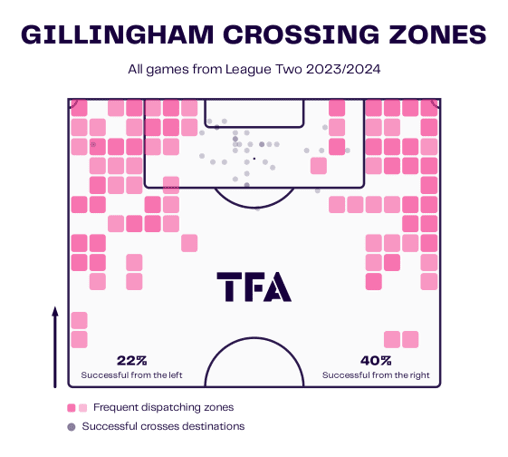
Creating chances from wide areas is another problematic area for Gillingham. They offer the fourth-lowest average number of crosses per 90 (12.24), and their overall accuracy rating of 31.8% isn’t excellent either, but the visual above sheds some light on why that might be the case. While Gills are slightly more active on the left flank when it comes to crossing, they are significantly less accurate – 18% less accurate, to be precise.
Breaking it down further – they have attempted 50 crosses from the left flank: their success rate of 22% means that just 11 of those crosses from the left are meeting a target. Meanwhile, they’ve crossed from the right flank 60 times, and their accuracy rate of 40% means they’ve hit a target on 24 occasions from the right flank. So perhaps focusing their play down the right flank would be a smart move.
Potential attacking tweaks
We’ve dissected some of Gillingham’s attacking play and analysed the evidential data to try and shed some light on why they are struggling in front of goal, but now is the time to use data to highlight some of their underlying strengths and see if there are any alternative attacking areas worth exploring with the view of incorporating them into their tactics.
For example, so far this season, Gills have one of the highest success rates for 1v1 dribbling in League Two but have one of the lowest averages for 1v1 dribbles per 90, so maybe there is an argument that they should look to utilise individual technical ability in certain areas.
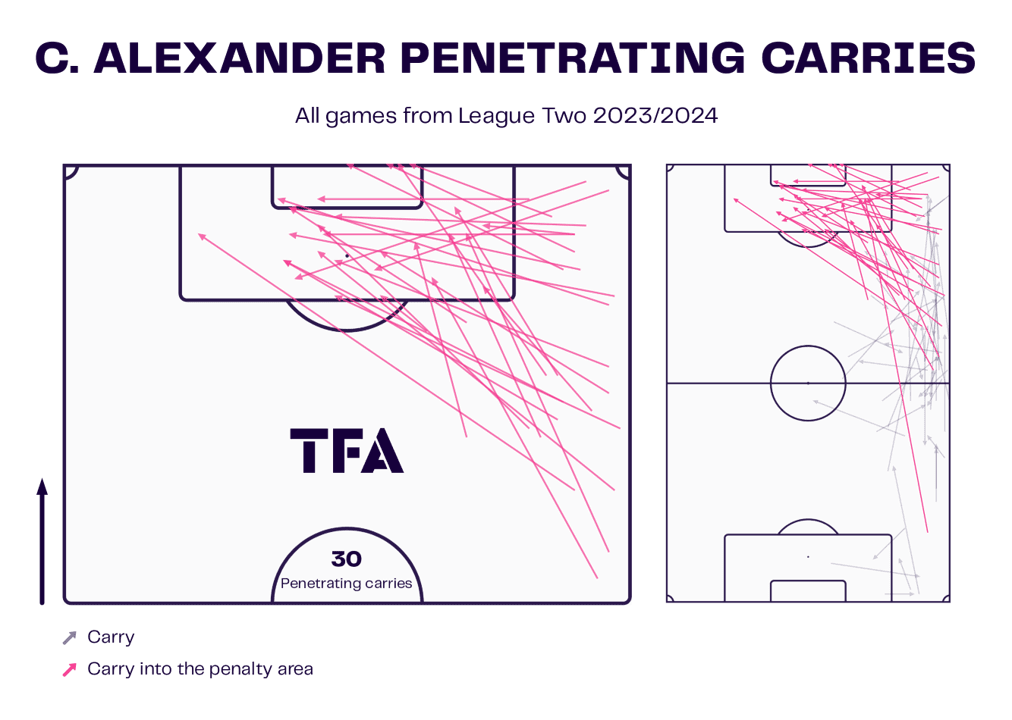
As mentioned, despite the low number of attempts, Gillingham’s success rates for 1v1s/dribbles shows signs of an evident strength in the team. For further context, they average 17.13 1v1s/dribbles per 90 – a relatively low average compared to their League Two counterparts, but their success rating of 59.1% is the fifth highest in the division. This begs the question – should Neil Harris implement more of an individual/technical element to this team’s tactics in the final third?
His full-backs have contributed very well to that dribbling success rate, and Cheye Alexander, in particular, seems to thrive in such an area. He has completed 30 penetrating carries so far this season, quite the contribution from a full-back after just eight games! Utilising him in this way could give Gillingham a fresh attacking dynamic if they leaned into it more; of course, this would come with the risk of leaving their defence short at the back.
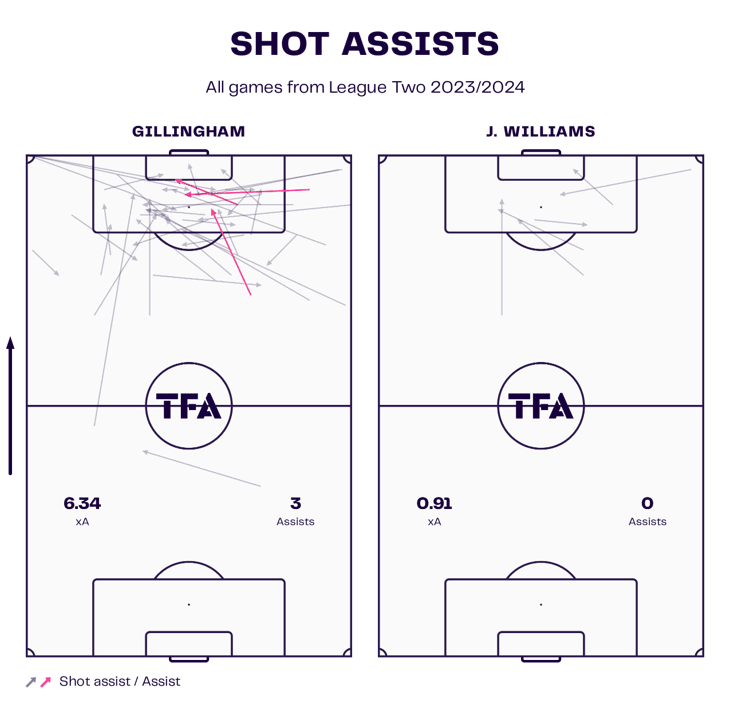
Building on from one of the earlier points regarding Gillingham’s lack of chance creation, it is time we looked at their rates for setting up shooting opportunities. As you can see from the visual above, they’ve managed just three assists this season, which, combined with much of the data we have presented in this scout report, suggests a fundamental tactical disconnect in possession.
The visual above confirms another earlier point in that they also struggle to create chances from the left flank and seem to provide more chances from the right flank and central areas. Jonny Williams’ contributions have been singled out as he is one of the individuals that fans, in particular, would like to see more of in a creative sense.
Vastly experienced in the EFL and capped 33 times by Wales, Williams is a versatile player capable of playing a plethora of midfield roles. Yet, this season, he, like his teammates, has struggled to provide that creative spark from midfield.
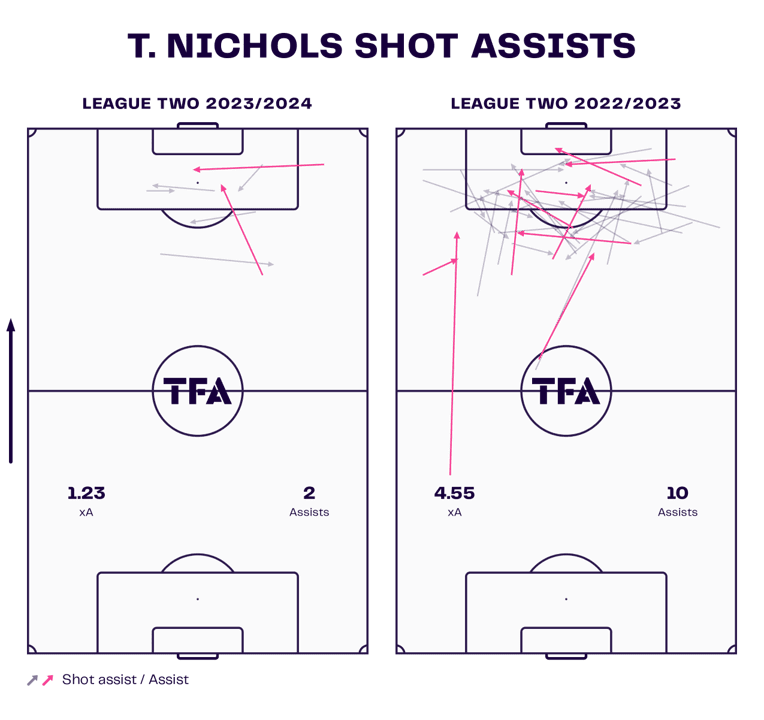
One of Gills’ most influential players in creativity this season has been Tom Nichols, another versatile player, except his versatility allows him to play anywhere across the front. So far this season, he has been one of the shining lights, claiming two of Gillingham’s three assists.
This is no fluke, either – he recorded ten assists last season (four for Gills after joining the club in January). He is an apparent creative influence and has looked like one of Gillingham’s best players in attack – his awareness and off-the-ball movement make him a real asset, too.
Of course, we previously touched on how Gillingham could improve their play by making their possession more purposeful and positive. Additionally, reducing the number of long passes they play or working on a tactical system that suits that approach would also benefit Harris’s men.
Conclusion
It’s easy to get carried away with over-analysing teams at this early stage of the season, but Gillingham will have expected to be in the mix for promotion come the end of the season, and so far, it is only their strong defensive record that has them ticking that box.
It isn’t a case of them simply being unlucky in front of goal because, let’s face it, for a team who currently sit atop the League Two table, they’ve hardly been in front of goal! Neil Harris will likely solve the attacking issues in the coming weeks and months. Gillingham will likely only get stronger as they gain confidence and the new players settle in, but as we have demonstrated in this scout report, they must improve as a whole in attack.

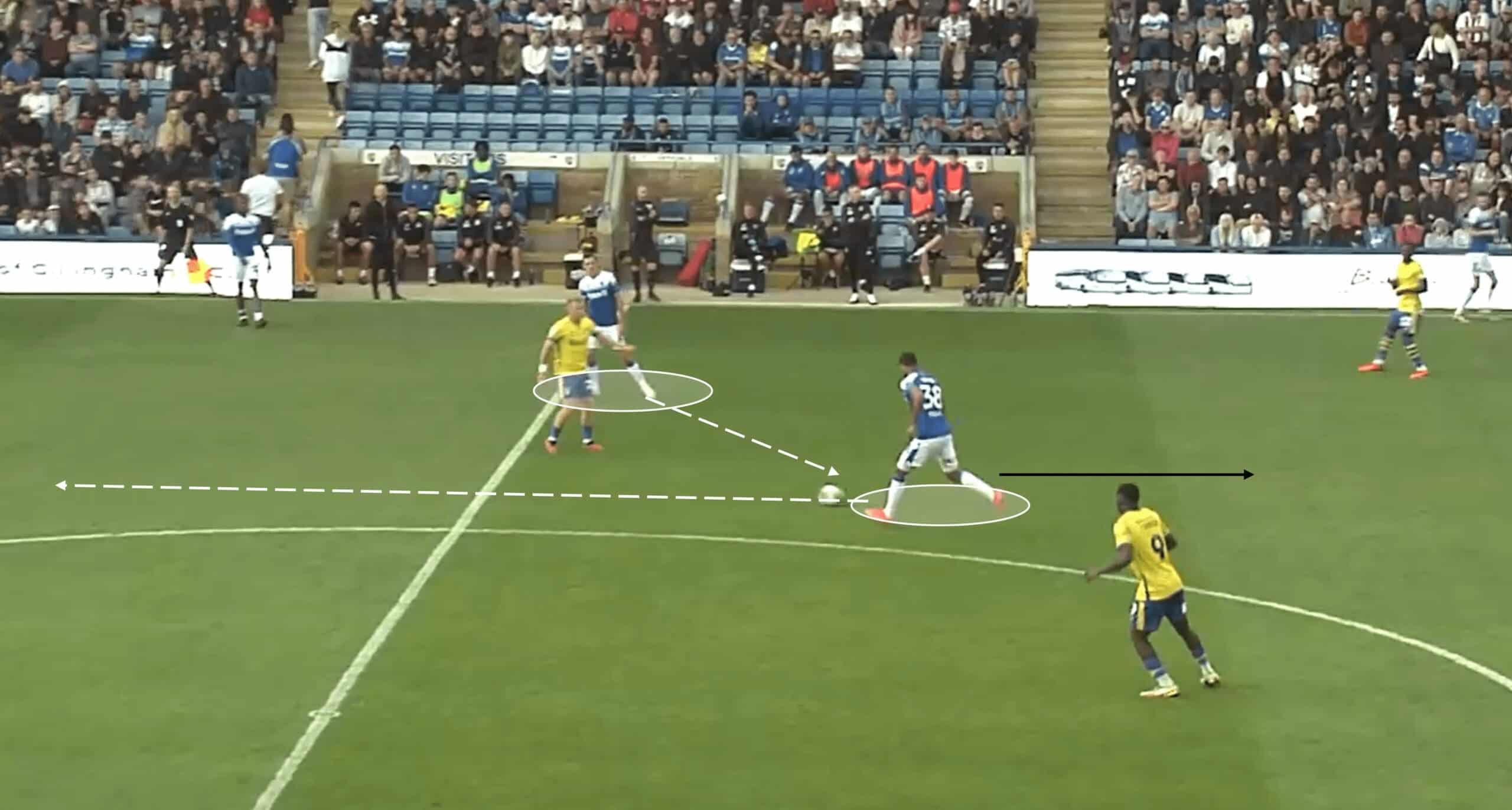




Comments